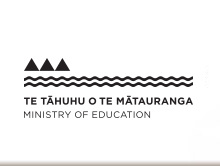Ngā Tamatoa a Rāhiri: Uenuku-kuare (wh. 10–16)
He whakarāpopoto
I tēnei wāhanga o te korero ka haere a Uenuku-kuare mā ki te ngahere, ki te roto, tāhere manu ai, hopu kēwai ai. I reira ka kohete atu a Uenuku-kuare i tana hoa, ā, ka whakahokia atu e tana hoa, “Ehara koe i taku pāpā! Kāhore hoki ōu pāpā!” Ka pōuri a Uenuku-kuare ki ērā korero, ka hoki pōuri atu ki tōna māmā.
Summary
In this section of the story Uenuku and the others go to the lake and the river to catch fish. There Uenuku-kuare reprimands his friend, and his friend replies, “You are not my father! You have no father!” Uenuku-kuare is saddened by the comments and returns upset to his mother.
| Te momo reo tuhi Language style |
|
|---|---|
| Ētahi āhuatanga o tēnei momo reo tuhi Features of this language style |
|
I te Ākonga e Pānui ana i te Pukapuka
During Reading
He Ngohe
Anei ētahi whakaaro mō ētahi ngohe e hāngai ana ki ngā kōrero katoa o roto o Whakawhiti 33, Tūhoronuku. Ka taea e te pouako ēnei te whakamahi kia tutuki ai ngā whāinga whakaako me ngā whāinga ako. Ka taea anō e ia te rāwekeweke ēnei whakaaro kia hāngai ake ki ngā whāinga ako me ngā hiahia o ngā ākonga.
Learning Activities
Here are some ideas for learning activities aligned with the writing in Whakawhiti 33, Tūhoronuku. Pouako can use these to help achieve their teaching and learning objectives. These ideas can be adapted to align with the learning objectives and needs of the students.
1. Pānuihia te kōrero, tautohu me te tuhi i ngā wāhi, i ngā tāngata i whakahuatia i roto i te kōrero nei. Kia oti, tuhia ngā whakamārama. Anei he tauira:
Pouērua – He pā, he maunga-ahi i mua rā.
Read the text, identify and write down the places and people named in the story. Once completed write descriptions. Here is an example:
Pouērua – He pā, he maunga-ahi i mua rā.
2. Tuhia tēnei kīanga ki roto i tētahi rerenga kōrero: Meinga, meinga!
Put this phrase into a sentence: Meinga, meinga!



